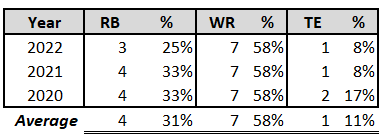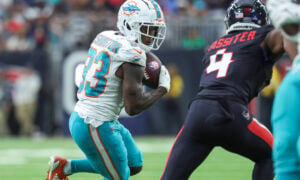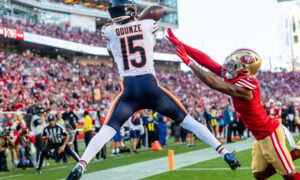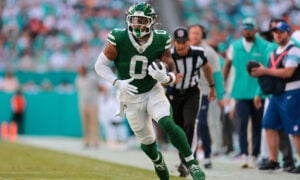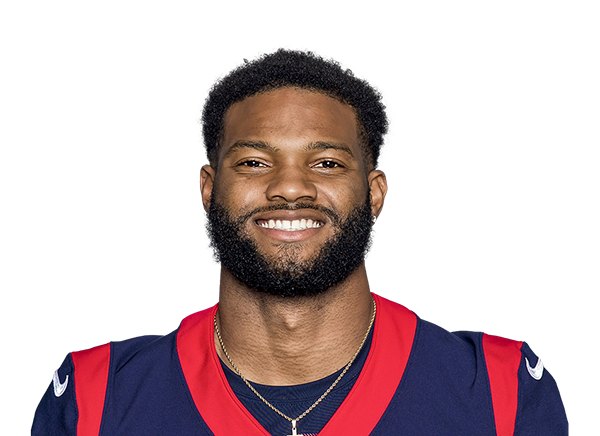Dynasty GAAP Memo: Christian McCaffrey, De’Von Achane, Jonathan Taylor, Breece Hall and Jahmyr Gibbs
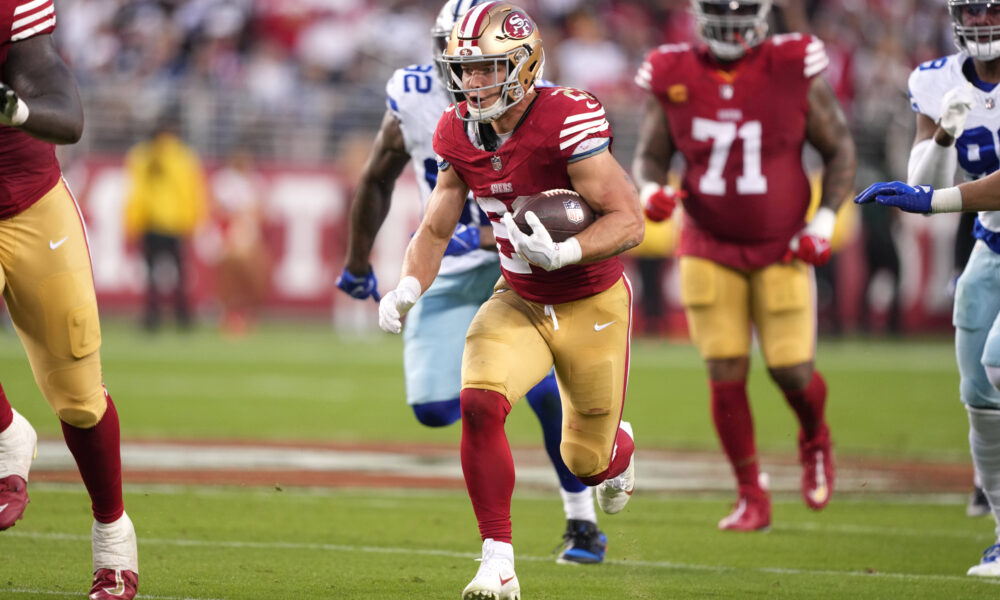
I am a CPA who fits the typical accountant stereotype. I enjoy writing technical accounting memos, accounting research (yes, it’s a thing), and analyzing the financial statements of a business. In accounting, you often must evaluate qualitative and quantitative factors during complex transactions to forecast future performance. I have found that the outlook and rationale of evaluating business transactions parallels another interest of mine, dynasty fantasy football.
In dynasty, we are given both quantitative factors (athletic scores, draft capital, college production, etc.) and qualitative factors (camp hype, team situation, injury history, etc.) that we must consider and evaluate to derive an estimate or projection of a player. Then, we must take calculated risks based on our team’s overall financial statements (i.e., current roster and league). I could go on and on with accounting-based puns and comparisons, but I think you get it.
I will note that I will write in the form of “accounting memos.” For anyone who has not been exposed, the format is very standard. Each memo will start with the “purpose.” Next, it will outline the applicable “guidance” or accounting literature utilized and supply background. Last will be the analysis and conclusion. The goal is to state the issue and quickly address it. My write-ups will follow this same logic.
To summarize, welcome to “Good at Analyzing Players” or “GAAP”. And yes, this is a play on “Generally Accepted Accounting Principles” and my wife did come up with it.
Purpose
The purpose of this memo is to prepare a multi-factor financial model to evaluate five of the top dynasty running backs, while considering age, situation, athletic profile and size, explosiveness and production, and draft capital (or contract).
Background
Fantasy football was created in 1962 when Bill Winkenbach, a part owner of the Oakland Raiders, and his friends, had the first draft in a New York City hotel. The format was quite different than it is today. Scoring was primarily centered around scoring plays. See the outline below:
- 25 points for all offensive touchdowns
- 25 points for a field goal
- 10 points for an extra point
- 200 points for special teams or defensive touchdowns
Based on this scoring, running backs became the lifeblood of fantasy football success. This was because the NFL in the 1960s was not nearly as pass-happy as it is today and because of the opportunities that elite running backs got near the goal line. When I started playing fantasy football in the early 2000s, the entire first round would often be running backs.
Due to the overreliance on the running back position for nearly 40 years, points-per-reception (“PPR”) leagues were formed to devalue the running back position as well as increase scoring opportunities. As of today, PPR (or half-PPR) is the most popular scoring system in fantasy. While this change helped increase the value of wide receivers and tight ends, running backs are still often among the top-scoring players in fantasy. The table below summarizes the top 12 fantasy scores for the last three seasons (excluding quarterbacks).
Thus, proving that RBs can still be consistent fantasy producers and make up a third of the premier fantasy scorers. However, something is different in 2023. Managers only have a handful of options they are comfortable putting in their lineups from week to week and we are having all kinds of surprises. For instance, Kyren Williams, Raheem Mostert, and Zack Moss are all top 12 scorers at the position through the first five weeks of the season but have a September ADP of RB77, RB48, and RB74, respectively. The 2023 season feels like a revolving door of running backs with an unforeseen producer appearing and disappearing constantly and projected producers getting injured (JK Dobbins, Nick Chubb, etc).
However, after week five, it feels like the dust is beginning to settle on the position and we can start to cement the running backs that can be long-term cornerstones for our dynasty teams. This memo will explore the top five dynasty running backs.
Resources
- Sleeper: Great interface for looking up historical statistics
- DLF Dynasty Rankings: Best dynasty rankings in the Industry
- DLF Average Draft Position (“ADP”) Data: The best resource to gauge current player value. Based upon real dynasty startups.
Analysis
While there are quite a handful of young running backs who are producing thus far, there are a few who are a bit more polarizing that all have something unique regarding their value. For the purpose of this memo, we will evaluate the value of the running backs below as well as additional factors that impact their values:
- Christian McCaffrey, San Francisco 49ers: McCaffrey is far and away the RB1 on the season and has finished as an RB1 all five seasons. However, unlike the others on this list, he is 27 years old.
- Breece Hall, New York Jets: Hall was electric to begin his rookie season in 2022 before tearing his ACL. We have seen flashes of that big play ability in 2023, but will Zack Wilson hold back his upside for the rest of the season?
- Jonathan Taylor, Indianapolis Colts: Taylor finished as the RB6 as a rookie and RB1 as a sophomore in 2020 and 2021, respectively. Since then, he has caught the injury bug, demanded a trade, and eventually signed a long-term extension. At 24, is he firmly cemented as a foundational dynasty asset?
- De’Von Achane, Miami Dolphins: Achane had two touches in the first two weeks of the season. Since then, he has rushed for 203, 101, and 151 yards. However, he is undersized at 5’9” and only 188 pounds.
- Jahmyr Gibbs, Detroit Lions: Since being selected 12th overall in the 2023 NFL Draft, Gibbs has been overshadowed by his running mate, David Montgomery. Montgomery is currently RB8 on the season while Gibbs is RB32 through five weeks.
For each of these players, there are multiple factors that drive their dynasty value. In order to derive an estimate for their value compared to one another, we will utilize a ‘multi-factor’ financial model. A multi-factor model is a financial modeling strategy in which multiple factors are used to analyze and explain asset prices. Multi-factor models reveal which factors have the most impact on the price of an asset. We will utilize a mix of quantitative and qualitative factors in order to rank each of these players.
- Opportunity and Situation
- Athletic profile and Size
- Explosiveness and Production
- Draft capital or Contract
- Age
For each of these factors, we will rank the five players selected and aggregate rankings accordingly in order to derive our multi-factor model. Please note that there were other RBs that would be in the same tier from a dynasty perspective (i.e., Kenneth Walker, Travis Etienne, etc), they were excluded from this exercise as the players above are a bit more polarizing. Additionally, “create a running back” Bijan Robinson was excluded as he is widely considered to be the RB1 in dynasty.
OPPORTUNITY AND SITUATION FACTOR
This factor will consider how the players’ skill set meshes with the offense and system and the offense’s overall performance. Please see the ranking below:
1. Christian McCaffrey
Since the trade to the 49ers during the 2022 season, McCaffrey has finished as an RB1 (top-12 PPR scorer) 81% of the time. Kyle Shanahan’s offense fits his skill set perfectly and he is single-handedly carrying fantasy teams because of it. Additionally, the 49ers seem to have a long-term answer at QB with Mr. Irrelevant from the 2022 Draft (Brock Purdy).
2. De’Von Achane
Under Mike McDaniel, the Dolphins offense is predicated on speed. Tyreek Hill, Jaylen Waddle, Raheem Mostert, and Achane all possess legit 4.3 speed. If Tua Tagovailoa can stay healthy, the Dolphins and Achane should lead the league in big plays. This is evident by Achane averaging over 12 yards per carry and being second in the NFL in rushing yards (460) while basically only playing three games.
3. Jonathan Taylor
A week ago, Taylor might have been fifth on this list. However, after signing a three-year, $42 million extension with the Colts, he moves up. Without Taylor, Shane Steichen and the Colts have had success running the football through five weeks. I can only imagine what they do with an explosive playmaker like Taylor. I’ve also been blown away by Anthony Richardson thus far. He seems to be further along as a passer than predicted (if only he could stay on the field).
4. Breece Hall
In week five, we saw Hall’s ‘snap count’ was removed and like clockwork, he erupted over 180 yards. However, the Jets are averaging 283 yards per game which is 27th in the NFL. Until they find another solution at QB (Kirk Cousins?), I would anticipate that Hall sees a lot of stacked boxes, which lowers his ceiling.
5. Jahmyr Gibbs
After the NFL Draft, you could have made an argument for Gibbs to be number one on this list after being selected 12th overall. With that draft capital, the rational thought would be that the Lions wanted to feature the former Alabama star. Through five weeks, it seems like they want to slot him into the D’Andre Swift role. While this role was fine for fantasy, all dynasty managers expected more than fine based on the rookie draft capital spent.
ATHLETIC PROFILE AND SIZE FACTOR
This will evaluate the player’s measurables from a prototypical running back perspective. Please see the ranking below:
1. Jonathan Taylor
Sometimes I think we forget how athletic Taylor is. At 5’ 10” and 226 pounds, he ran a 4.39 at the combine. This gives rise to a 99th percentile Speed Score. He is big and fast. What more could you want in a running back?
2. Breece Hall
Like Taylor, Hall is another freak from an athletic perspective. He is 5’11’ and 217 pounds and also ran a 4.39 at the combine. He is essentially 1b to Taylor as he only has a 98th percentile speed score. I put him second on this list based upon coming off of his ACL injury.
3. Christian McCaffrey
McCaffrey has great measurables and prototypical size at 5’11” and 202 pounds. He rarely comes off the NFL field and has not missed a game since 2021.
4. Jahmyr Gibbs
Gibbs is slightly undersized at 5’9” and 199 pounds. Due to this, he was primarily seen as a third down or pass-catching role. He ran an impressive 4.36 40, which yielded a 92nd speed score.
5. De’Von Achane
Achane is firmly the smallest on this list at 5’9” and 188 pounds. Similar to Gibbs, his slight frame profiles him primarily as a third down or pass-catching role. Due to his size, managers could worry about susceptibility to injury.
*Please note that speed score is a metric that attempts to predict running back success by considering a player’s 40-yard dash time, height, and weight.
EXPLOSIVENESS AND PRODUCTION FACTOR
This can be described as the ceiling, or weekly upside. This factor will consider a player’s ability to ‘take it to the house’ anytime they touch the ball, knack for finding the end zone and scoring fantasy points. Please see the ranking below:
1. De’Von Achane
For the last three weeks, Achane has been unstable. He leads the league in runs over 20+ yards, 30+ yards, 40+ yards and 50+ yards. Not to mention, he is averaging more than 25 fantasy points per game and is RB3 while only playing three games. This might be a polarizing take, but I have not seen a player quite like Achane since Alvin Kamara’s rookie season in 2017. After which, he rattled off five RB1 seasons.
2. Breece Hall
Before getting injured during his rookie season, he led the NFL in breakaway run rate and yards per touch at 11.3% and 6.9, respectively. To begin his sophomore season, he picked up right where he left off with a breakaway run of 9.4% and 7.2 yards per touch. All while coming back from his ACL tear. I would expect that big play ability to continue. In a couple of weeks, Hall could climb the rankings for this metric.
3. Christian McCaffrey
It feels dirty to have McCaffrey this low on this metric. If it was production alone, he would easily be number one. Since McCaffrey was a rookie, he has finished as an RB1 in each of his seasons that he played a full season. He is the best pass-catching running back in the league and might be one of the best route runners in the NFL, period.
4. Jonathan Taylor
We have seen Taylor finish as the RB1 overall in fantasy. However, that was during the 2020 season. I believe the ability is still there and we got glimpses in week five, but I want to before I am comfortable moving him further up for this factor.
5. Jahmyr Gibbs, Detroit Lions
This is painful. However, Gibbs does not have the track record in the NFL and has only averaged 4.7 yards per touch. I do think this is a symptom of the opportunity and situation factor discussed above, I could not move him any higher on the list.
DRAFT CAPITAL AND CONTRACT FACTOR
This will evaluate the team’s investment in the player in either financial compensation or draft capital. Please see the ranking below:
1. Christian McCaffrey
The 49ers traded a 2023 second-round pick, 2023 third-round pick, 2023 fourth-round pick, and a 2024 fifth-round pick for McCaffrey. In addition to that draft capital, they still have to pay him $16M per year. Oh, and he was picked eighth overall in the 2017 NFL Draft.
2. Jahmyr Gibbs
Gibbs was drafted in the 12th overall in the 2023 draft, which was considered a reach by most draft analysts. However, since the draft, there has been chatter that he could have gone even higher.
3. Jonathan Taylor
Taylor was drafted 41st overall (second round) in the 2020 NFL draft. Since then, he has signed a $42M extension to make him the third highest paid RB in the NFL at $14M per season.
4. Breece Hall
Hall was drafted 36th overall (second round) in the 2022 NFL Draft. This is actually higher than Taylor above. However, based on the financial commitment given to Taylor and the trivial difference between the two, I gave the nod to Taylor.
5. De’Von Achane
Achane is the only player being considered who was not drafted in the first two rounds of the NFL Draft. He was picked 84th overall (third round) in the 2023 NFL Draft.
AGE FACTOR
This factor is clear. In dynasty, we want the youngest asset for longevity purposes. Please see the ranking below:
1. Jahmyr Gibbs
Gibbs is 21.5 years old.
2. De’Von Achane
Achane is 22.0 years old.
3. Breece Hall
Hall is 22.3 years old. This was surprising to me. I figured he was 23 or 24.
4. Jonathan Taylor
Taylor is 24.7 years old.
5. Christian McCaffrey
McCaffrey is 27.3 years old. While I expect his skillset to age well due to his pass-catching ability, the other RBs from his draft class are starting to fall off quickly.
Conclusion
Based on the factors above, please see the multi-factor model summarized below.
Based on the model prepared, the elder statesman (McCaffrey) leads the way and is followed by a three-way tie for second with Achane, Taylor and Hall and Gibbs in fifth. The purpose of this model was to bifurcate the distinct factors that we evaluate players in order to try and derive an objective manner to value and differentiate these players from one another. As previously mentioned, the purpose of the multi-factor model is to identify the factors that have the most impact on the price of an asset. Fantasy managers should adjust the weighting based on your team makeup. If you are a contender, trying to target the cheapest of the second tier might make sense. If you are a rebuilder, you might target Gibbs due to his age and draft capital if his owner is frustrated with his usage.
Overall, I do not tend to invest in RB in dynasty and the 2023 season, as mentioned above, is a notable example of why. However, these five are the ones I would be kicking the tires on to see if I can get any of them on my teams for anything less than two first-round rookie picks. I would also try and tier down from any of these players to any of the others.
“It’s frustrating for us as running backs. Just because we know the value that we bring to the team.”
- Dynasty GAAP Memo: Post-Mortem Rookie Re-Draft - December 12, 2024
- Dynasty GAAP Memo: Buying The WR Dip Or Falling Knife? - November 14, 2024
- Dynasty GAAP Memo: Sam Darnold’s Recession and Recovery - October 3, 2024




